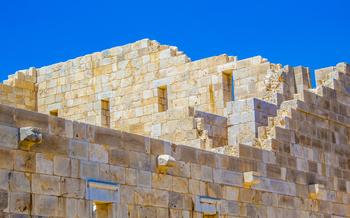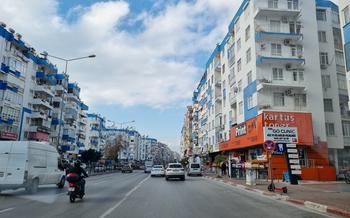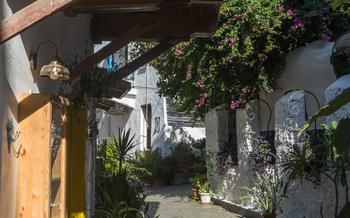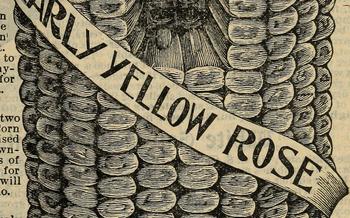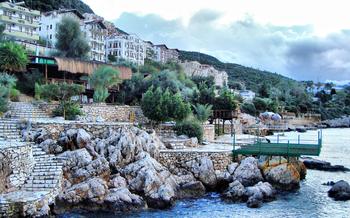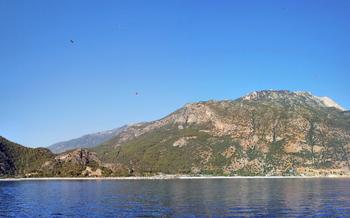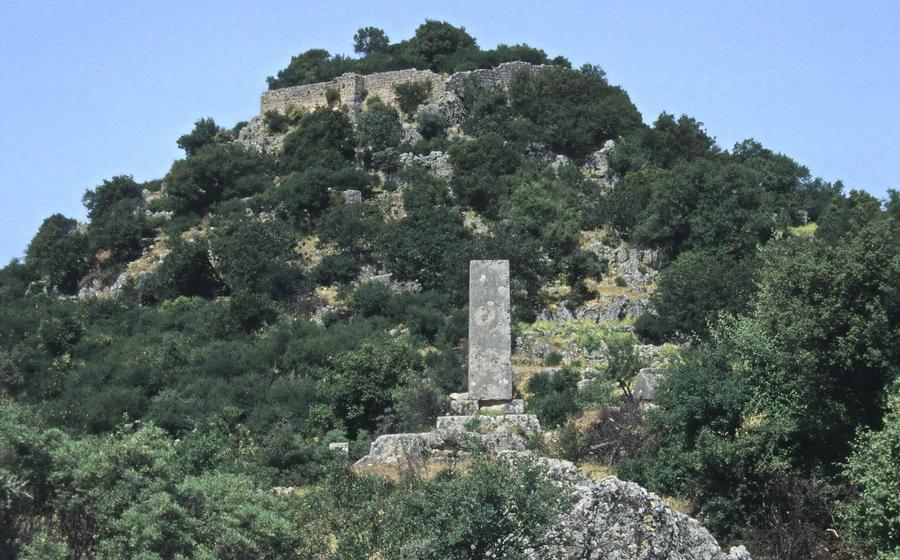
Apollonia Ancient City
- Historical Background
- Archaeological Highlights
- Temple of Apollo
- Necropolis
- Agora: The City's Vibrant Marketplace
- Bouleuterion
- Aqueduct
- City Walls
- Scenic Views:
- Hiking Trails
- Nearby Beaches
- Local Cuisine
- Souvenirs and Handicrafts
- Insider Tip:
Historical Background
In ancient times, Apollonia, nestled along the turquoise waters of the Mediterranean Sea, stood as a prominent city within the Lycian League, a powerful confederation of cities. Its origins trace back to the 7th century BC when Greek colonists, led by the oracle of Apollo at Delphi, embarked on a journey to establish new settlements along the coast of Anatolia. Among these settlements was Apollonia, named in honor of the revered Greek deity Apollo.
Over the centuries, Apollonia flourished as a religious and political center. As a member of the Lycian League, it played a significant role in the region's affairs, minting its coins and participating in the league's council meetings. The city's prosperity was closely intertwined with its strategic location, serving as a vital port for trade and commerce, connecting the Lycian League with the wider Mediterranean world.
However, the relentless passage of time and the shifting tides of history eventually led to Apollonia's decline. The city fell under Roman rule in the 1st century BC, and its importance gradually diminished as new centers of power emerged. By the Byzantine era, Apollonia had faded into obscurity, leaving behind its impressive ruins as a testament to its once-glorious past.
Archaeological Highlights
Apollonia's ruins bear witness to its rich history and impressive architectural achievements. The city walls, with their towers and gates, stand as a testament to its defensive capabilities. Inside the walls, the well-preserved theater is a reminder of the city's cultural significance. It could accommodate up to 5,000 spectators and hosted various performances and events.
Excavations at Apollonia have unearthed a wealth of artifacts that shed light on the city's past. Ancient coins, pottery, and inscriptions provide valuable insights into its economy, trade, and religious practices. Among the most notable discoveries is a colossal statue of Apollo, the city's patron deity. This impressive statue, now housed in the Antalya Museum, stands as a testament to the artistic prowess of the ancient Lycians.
Temple of Apollo
At the heart of Apollonia's religious life stood the majestic Temple of Apollo, a sanctuary dedicated to the revered Greek god of music, prophecy, and healing. Constructed atop a hill overlooking the city, the temple commanded a prominent position, symbolizing Apollo's divine presence and influence. Its grand architectural design and intricate embellishments reflected the city's devotion to the deity.
The temple's facade featured a columned portico, supported by elegant Ionic columns that framed the entrance. Inside, the cella, or main chamber, housed a colossal statue of Apollo, a masterpiece of ancient sculpture that exuded an aura of divinity. The statue, now displayed in the Antalya Museum, once stood as a testament to the artistry and craftsmanship of the Lycians.
Excavations at the temple site have unearthed a wealth of artifacts that shed light on Apollonia's religious practices and rituals. Among the most notable discoveries are votive offerings, such as coins, pottery, and inscriptions, left by worshippers seeking Apollo's favor or expressing their gratitude for his blessings. These artifacts provide valuable insights into the religious beliefs and customs of the ancient Lycians.
The Temple of Apollo stands as a symbol of Apollonia's spiritual heritage, inviting visitors to contemplate the profound significance of this sacred site. Its enduring legacy evokes a sense of awe and wonder, transporting visitors back in time to an era when gods and goddesses were revered, and faith played a central role in shaping the lives of the ancient Lycians.
Necropolis
In the hillside just outside the city walls, you'll find the extensive necropolis of Apollonia, a sprawling complex of rock-cut tombs that offer a glimpse into the burial practices of the ancient Lycians. These tombs come in various shapes and sizes, from simple chambers to elaborate structures with intricate facades and inscriptions. Some tombs feature elaborate carvings and decorations, showcasing the artistic skills of the Lycian craftsmen.
The necropolis provides valuable insights into the beliefs and customs of the Lycians regarding death and the afterlife. Many tombs contain inscriptions that reveal the names and titles of the deceased, as well as details about their lives and accomplishments. Some tombs also feature reliefs and paintings depicting scenes from mythology or daily life, offering a glimpse into the cultural and religious beliefs of the Lycians.
Exploring the necropolis is a fascinating experience that allows you to connect with the ancient Lycian civilization and gain a deeper understanding of their funerary practices. As you wander among the tombs, you can't help but be struck by the sheer number and variety of these structures, each representing a unique individual who once lived and breathed in this ancient city.
Agora: The City's Vibrant Marketplace
The agora, the heart of ancient Apollonia, was a bustling marketplace and meeting place where locals and visitors gathered to conduct business, socialize, and exchange ideas. Imagine the lively atmosphere as merchants displayed their wares, shoppers haggled over prices, and citizens engaged in lively discussions. The agora was lined with shops, stalls, and other structures, each serving a specific purpose. From fresh produce and imported goods to handcrafted pottery and textiles, the agora offered a diverse range of products to meet the needs of the community. As you wander through the remains of the agora, let your imagination transport you back in time to witness the vibrant energy and interactions that once filled this space.
Bouleuterion
The bouleuterion, meaning "council chamber," was the heart of Apollonia's political life. It was here that the city's leaders, known as the boule, convened to discuss important matters and make decisions. The bouleuterion was a large, rectangular building, capable of accommodating a substantial number of officials and citizens. Its design featured rows of stone benches arranged in a U-shape, providing seating for the members of the boule.
At the far end of the chamber was a raised platform, where the presiding officer or speaker would address the assembly. The walls of the bouleuterion were adorned with inscriptions and reliefs, some of which depicted scenes related to civic life and governance. These inscriptions provide valuable insights into the functioning of the boule and the laws and regulations that governed Apollonia.
The boule played a crucial role in the city's administration. It was responsible for a wide range of matters, including the enactment of laws, the management of finances, and the appointment of officials. The boule's decisions were binding on all citizens of Apollonia, and its authority was essential for maintaining order and stability within the city.
Visiting the bouleuterion today allows visitors to step back in time and imagine the lively debates and discussions that took place within its walls. It serves as a reminder of the importance of civic participation and the enduring legacy of democratic institutions in ancient Greece.
Aqueduct
Follow the impressive remains of the ancient aqueduct that once brought life-giving water to Apollonia from nearby springs. Marvel at the engineering prowess of the ancient builders who constructed this vital infrastructure, ensuring a steady supply of water for the city's inhabitants. Imagine the aqueduct's grandeur as it snaked through the landscape, defying gravity and delivering the precious liquid to the city's fountains, baths, and homes. Its enduring presence serves as a testament to the ingenuity and foresight of Apollonia's ancient inhabitants, who understood the importance of water for their city's prosperity and well-being.
City Walls
The city walls of Apollonia, a testament to the city's strategic importance and engineering prowess, have stood the test of time and remain remarkably well-preserved. These formidable fortifications once protected Apollonia from invaders and served as a symbol of its strength and resilience. Stroll along the walls, marveling at their intricate construction and strategic placement. Admire the sturdy towers and gates that once guarded the city's entrances. From atop the walls, take in panoramic vistas of the surrounding countryside, dotted with olive groves, pine forests, and the shimmering Mediterranean Sea. Let your imagination transport you back to a time when Apollonia's walls echoed with the sounds of battle and the bustling activity of a thriving ancient city.
Scenic Views:
Apollonia offers breathtaking panoramic views of the Mediterranean Sea, the surrounding mountains, and the picturesque landscape that embraces the ancient ruins. From the elevated vantage points within the site, visitors can capture stunning photos that combine the beauty of antiquity with the natural wonders of the region. The views from Apollonia are a testament to the harmonious coexistence of history and nature, creating a captivating backdrop for exploring this ancient city.
Hiking Trails
Beyond the ancient ruins, Apollonia offers a unique opportunity to explore the surrounding natural beauty through its extensive network of hiking trails. These trails cater to various interests and fitness levels, allowing visitors to immerse themselves in the region's diverse landscapes.
For those seeking a leisurely stroll, the trail along the ancient aqueduct is an excellent option. This easy-to-follow path leads you through the serene countryside, offering glimpses of the aqueduct's impressive construction and the surrounding flora and fauna. The trail is relatively flat, making it suitable for all ages and abilities.
For a more challenging experience, the trail that leads to the summit of Mount Ilgar is highly recommended. This strenuous hike rewards adventurers with breathtaking panoramic views of the coastline, the Taurus Mountains, and the ancient city of Apollonia. Along the way, hikers can discover hidden caves, ancient inscriptions, and remnants of old settlements.
For those seeking a unique coastal experience, the trail to Kaputas Beach is a must-do. This scenic path takes you through a picturesque gorge, leading to one of the most stunning beaches in the region. The crystal-clear waters, white sand, and dramatic cliffs create a breathtaking setting for swimming, sunbathing, and enjoying the Mediterranean sun.
Whether you prefer leisurely walks amidst ancient ruins, challenging mountain hikes, or picturesque coastal trails, Apollonia has something to offer every outdoor enthusiast. Remember to wear comfortable shoes, bring plenty of water, and be prepared for varying weather conditions.
Nearby Beaches
Take a break from exploring ancient ruins and indulge in the beauty of the Mediterranean Sea at the nearby Kaputas Beach and Patara Beach. These stunning beaches offer crystal-clear waters, soft golden sands, and breathtaking scenery.
Kaputas Beach is a secluded paradise nestled between towering cliffs, accessible via a scenic staircase. With its pristine waters and picturesque views, it's an ideal spot for swimming, snorkeling, and sunbathing.
Patara Beach, on the other hand, is one of the longest sandy beaches in Turkey, stretching for approximately 18 kilometers. It's a popular destination for swimming, sunbathing, and long walks along the shore. The beach is also known for its historical significance, as it was once a major port city during the Lycian period.
After a day of exploring Apollonia, relax and rejuvenate at these nearby beaches, combining history and nature for a truly unforgettable experience.
Local Cuisine
Indulge in the delectable flavors of Kaş and the surrounding region, where Turkish and Mediterranean culinary traditions converge. Freshly caught seafood, grilled meats, and traditional Turkish meze are just a few of the culinary delights that await you.
Savor the succulent grilled octopus, a local specialty, or tantalize your taste buds with the aromatic lamb chops, seasoned to perfection. For a true Turkish experience, try the meze platter, featuring an assortment of small dishes such as hummus, baba ghanoush, and stuffed vine leaves.
Don't miss the opportunity to sample the local olive oil, renowned for its rich flavor and health benefits. Drizzle it over fresh salads, grilled vegetables, or simply enjoy it with some crusty bread.
For a sweet treat, indulge in the traditional Turkish dessert of sütlaç, a creamy rice pudding sprinkled with cinnamon.
Whether you choose to dine at a charming waterfront restaurant in Kaş or at a traditional family-run eatery in a nearby village, you'll find that the local cuisine is a feast for the senses, offering a taste of the region's rich culinary heritage.
Souvenirs and Handicrafts
After exploring the ancient ruins of Apollonia, take some time to browse the vibrant market in Kaş and discover the unique souvenirs and handicrafts that the region is known for. Local artisans showcase their skills in a variety of handmade goods, including intricate ceramics, colorful textiles, and exquisite jewelry.
Stroll through the market stalls and admire the vibrant colors and intricate designs of the pottery. Choose from a range of decorative plates, bowls, and vases, each one handcrafted with care and attention to detail. The textiles are equally impressive, featuring traditional Turkish patterns and motifs woven into beautiful rugs, cushion covers, and scarves.
For a truly unique souvenir, look for handmade jewelry crafted from silver, gold, and semi-precious stones. Local artisans create delicate necklaces, earrings, and bracelets that are both stylish and timeless. Whether you're looking for a gift for a loved one or a special memento of your trip to Turkey, you're sure to find something special in the Kaş market.
By supporting local artisans, you not only take home a piece of Turkish craftsmanship but also contribute to the preservation of traditional skills and techniques. So be sure to set aside some time to explore the market and bring home a unique souvenir that will remind you of your unforgettable experience in Apollonia and Kaş.
Insider Tip:
Navigating Apollonia's ancient ruins under the scorching sun can be tiring and uncomfortable. To make the most of your visit, plan your trip strategically. Avoid the peak heat of midday and opt for cooler hours. Early mornings and late afternoons offer ideal conditions for exploring the site, with milder temperatures and softer lighting.
Remember to prioritize comfort when packing for your adventure. Wear sturdy and supportive footwear to tackle uneven terrain and protect your feet from the heat. Stay hydrated by bringing along a sufficient supply of water, especially during the warmer months. These simple precautions will ensure a more enjoyable and fulfilling experience as you delve into the wonders of Apollonia.
